Photos by Hugues Vanhoolandt taken at the Goodwood Revival, 2010
This year Goodwood celebrated the life and career of John Surtees. Born in 1934, his racing career spanned 22 years from 1950 to 1972, winning world championship driving titles for MV Agusta four times and once for Ferrari in 1964, then going off on his own to create a series of Formula cars which met with mixed success. Few have experienced a more varied and successful life in motorsports than John Surtees.
In an exclusive interview granted in 2001 with VeloceToday Editor Pete Vack, the only Champion on two wheels and four tells it like it was…
…as a youth (1934-1948)
My father was very impetuous; mother was a strong steadying force. This made it quite a nice balance. We grew up in a household where we had old fashioned respect. Dad was very to the point. He wasn’t against occasionally giving you a clip if he didn’t agree and were out of line.
At a fairly early stage I started to help my father [with his motorcycle business]. I was the cleaner, mechanic, gofer. I had a few tools, and started making things. In a way this isolated me to a degree from my classmates. Their interests revolved around football. But I was intrigued in tinkering with spanners.
…as a budding champion (1951-1955)
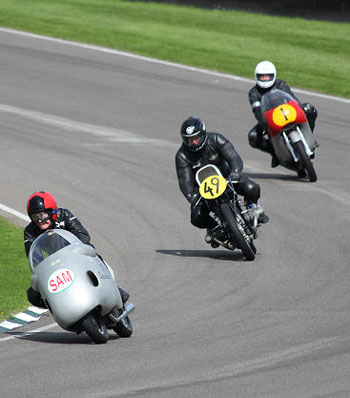
Surtees cycles. At center the BMW raced by Surtees boyhood hero Georg Meier, and the famous MV Agusta 500.
When Dad gave me an old Wallace Blackburn speedway bike to fix, and that’s how my riding started. I was quite competitive in my first few races. Still, I was a rider on a machine, not knowing what I was doing. It wasn’t until later in the year when I built the Vincent, and went to a race meeting in Wales, [August 30, 1952] I suddenly became one with the bike. At that moment, my career and future were suddenly clearly defined. Through that becoming one with the bike, sensing the messages it sent you, that confidence which you then build on was born. Before you were working hard at it, and after you were one.
In my first full season with the Vincent, 1952, it was really all coming together, and by ’54, my fourth full season, I had enough belief in myself that I could go as quickly as anybody. I wasn’t so overconfident that I knew it all; I’ve always been a person who will question myself all the time. Otherwise people make mistakes. You don’t have a chance to make mistakes. By 1954 I’d ridden against everyone who was out there and lead them and beat them. By the next year I was totally confident that I could do that.
…with the MV Agusta team (World Champion 1956, 58, 59, 60)
The established firms in motor racing, Gilera, Moto Guzzi, Benelli, were actual families competing with each other. They had given up the swords and shields and fought each other with cars and bikes. Then Domenico Agusta entered the picture, with his involvement with aircraft, decided motorcycles were the thing, stole some people from Gilera, and started motorcycle racing. He was born in Sicily, and as outcasts as such, saw this as a means of establishing himself in northern industrial Italy.
In terms of satisfaction, the motorcycle career was more satisfying than my car racing career, because I made less mistakes off the track. Due to growing up with motorcycles, and my father, I was able to deal with the people… I knew all the people. In my car racing, I hadn’t known a soul; I’d really never seen a car race. I found out the hard way those you could trust and those you couldn’t trust.
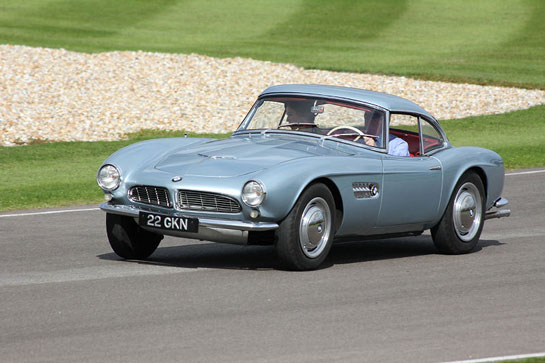
While living in Italy, Surtees would drive back to the U.K. in this BMW 507, and return with parts like Lucas electrics and Ferodo brakes. He would average 70 mph from door to door without motorways.
…moving to Italy (1956-1965)
When I arrived I didn’t know anything, including the Italian language, and so I stayed in a little town and watched Spaghetti Westerns–they spoke slowly and I picked up a bit of Italian that way.
One of the first things I realized was that the Italians do things with beauty, not just concentrating on the practical side. They do things from within. In England we will create something and justify it by saying this is very functional and practical, but it has no style. The Italians simply have a great deal of feeling for style. I loved the food and the Italian wine as well!! I didn’t have much time for the women. And I didn’t have that much interest. I was totally involved in my life. I was someone who was fortunate enough to get paid for doing what I loved to do.
I used to drive back and forth from Italy to England; I was the link with the manufacturers in England, and brought back parts. In those days there wasn’t much traffic. John Hartle [MV teammate] and I would set off together in my BMW 507. I’d leave Milan in the morning and get back to England in the afternoon and average 70 mph door to door without a motorway. This really gave me good experience driving.
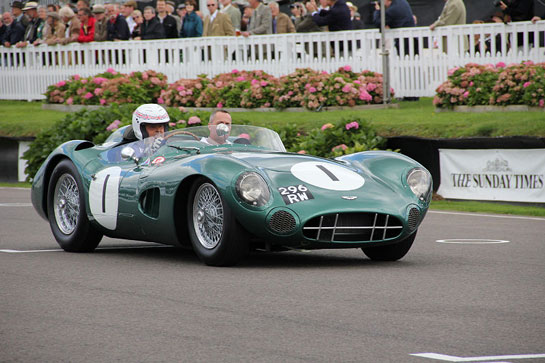
Reg Parnell invited John to try an Aston Martin DBR1 at Goodwood in 1959 (Brian Redman is driving here) and was the first race car he had ever driven. It was fitted with a Maserati gearbox, and David Brown, who made transmissions, of course considered it a sacrilege, Surtees wrote of the Parnell Aston.
…racing with death
I think that the drivers who believed that it couldn’t happen to them were more likely to have accidents. You must be quite aware that you could have an accident and be as professional as possible. Look at details as much as possible to ensure that you went to the limit, or if you went a bit over the limit, it was calculated risk. A lot of the accidents at that time were caused by unfortunate circumstances, being at the wrong place at the wrong time. For example, the situation with my Canadian accident, [September 25th 1965] for the Brands Hatch race I had entered two Lola T70s. My normal car I had given to Jackie Stewart, and I drove the new one; I was the team leader and I had to shake the car down. So I shook the car down and won the race with it. Jackie complained that I had the new car. So I said, they are both the same, so you take the new one. So I never was supposed to drive that car in Canada. I was happy with the car, but I wasn’t to know that it had a new upright, mistakenly fitted to the car before it was checked. The core had moved and the wall thickness was too thin. It happened to shatter just at that time when I jumped in that car. It was just one of those things. [The Lola T70 crashed and Surtees broke his pelvis in two, rupturing his kidneys, among other injuries.]
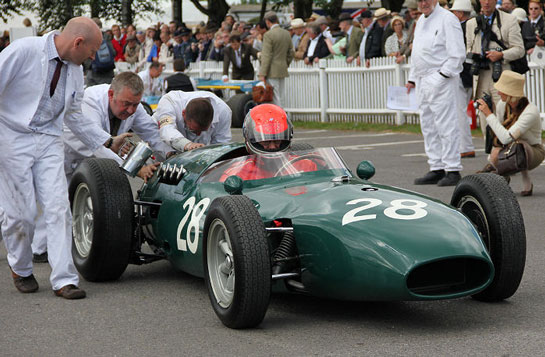
Surtees raced the 1961 Vanwall rear-engined VW14 to fifth in its only outing at Silverstone. Because of his connections with Norton motorcycles, Surtees always liked Tony Vandervell.
The cars of the 1960s were a bit of a backyard specials, the technology was better but the construction was frail. One of the reasons I went to Ferrari I thought at least it wouldn’t loose wheels or suspension. Strangely enough, I had the steering break on the Ferrari during the 1964 Austrian GP, which I was leading at the time, and would have made the championship much more comfortable had I won this race. This was the only time I had a failure on the Formula One cars, and I recall a failure on one of the prototype cars at the Nurburgring in 1964. But generally Ferrari still maintained a degree of the engineering they had in the 50s.
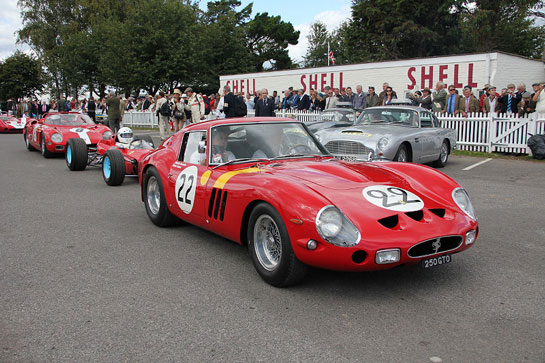
John led the ’62 Goodwood TT in a GTO similar to this one, which is owned by Nick Mason. Aston Martin driven by Jim Clark spun in front of Surtees, ending the race for Surtees.
…with Enzo Ferrari
I said at the time of his death, “the best of Ferrari’s days are yet to come.”
In many ways, the reason why I made that remark after his death was that I believe that Enzo Ferrari and Soichiro Honda much alike in that they had both outlived their worth to the company. Their very attitudes which were forged in the conflict of creating their names were methods no longer appropriate or acceptable. For example, one year, within out team, we had a journalist awarded a prize, even though he was responsible for creating more adverse comment by writing that I had complained about Forghieri or that Forghieri had complained about me or I’d fallen out with Bandini. The journalist was actually paid by Ferrari to write these articles. Ferrari created a conflict because that brings out the best in people. This is going back to the old feudal ways of thinking. All those things that he latched onto, the insignia, his successes, his defeat of Alfa Romeo, were his battles. He thrived on that. If there wasn’t a conflict he would create a conflict. It may have been that the drivers of the fifties had to be treated that way, I don’t know. But maybe that’s why Fangio said enough, and left the team. And maybe why he came up to me at Monza when he heard I was joining Ferrari, and said, “Giovanni, stare attento. Maranello molte pericoloso.” Which means, pay attention, Maranello is very dangerous.
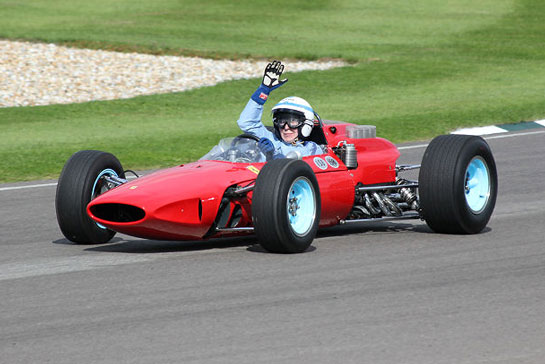
Surtees on the track with the Ferrari 158 with which he won the F1 title in 1964. Surtees encouraged Ferrari to look outside of Maranello for ideas and new technology.
But at the same time the sixties were a very critical period for Ferrari. Much of what he did was because he had to keep a lot of balls in the air to make ends meet. I didn’t realize this until afterwards, but that’s why the F1 cars didn’t get the work and time on them. It was just a question of people resources; it was a question of money. You had to produce X number of GT cars, and you had to produce X number of things to get ready for Le Mans, to get the various support monies in and get customers to pay up etc. After I started my own team I then learned why he did things that at the time seemed quite inconceivable.
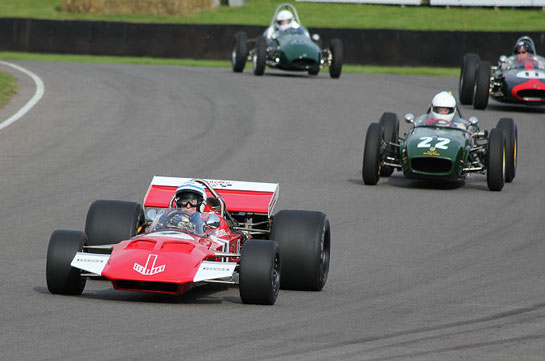
The first Formula 1 car built by Surtees was this Cosworth TS7. John took it to 5th place in the 1970 Canadian Grand Prix. Engine problems plagued the new car throughout the season.
…as a Ferrari driver
Many people misunderstand this. I believe that I was a good test driver. I was able to feed back the sort of information about how it felt at the seat of the pants and tips of the fingers and to give them an idea of what was required. But it was very much a team effort. I was not involved in designing the cars; it was purely a question of development and providing suggestions. I made point of going around and trying to learn from others. And when I spoke to the old man about running the Lola T70s, I said look, not only you are getting isolated but I’m getting isolated around here with purely Maranello technology. The world is wider than that. I wanted to keep myself in touch with the outside world. Ferrari didn’t have a car to compete against these American specials, and let me work with Eric Broadly—he said as long as it’s not in the name of another factory—so that’s why Team Surtees was born.
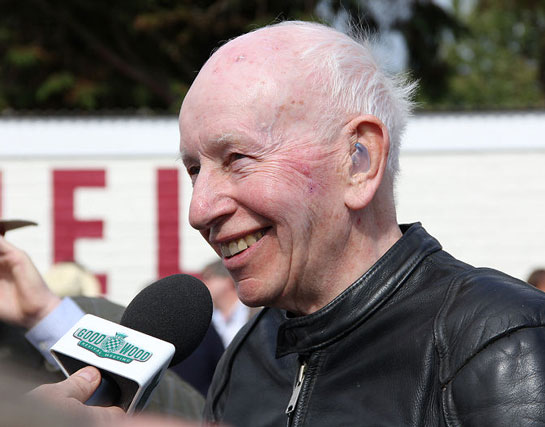
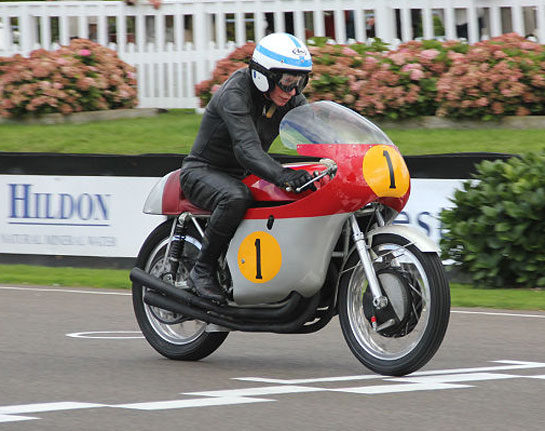
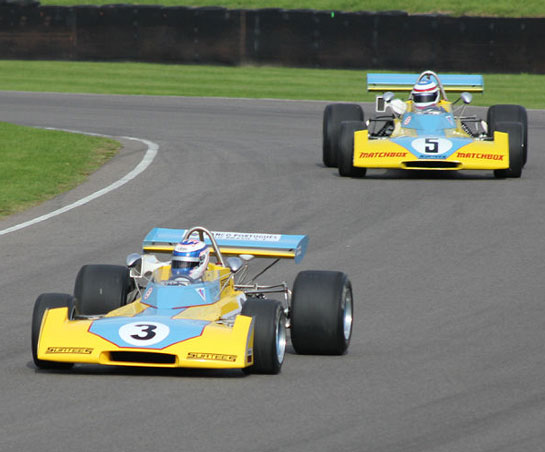
I had the great pleasure of reporting on John’s early motorcycle racing successes, writing for ‘The Motor Cycle’ in London. He was riding 350 and 500 ‘Featherbed’ Nortons and would arrive at circuits with his dad in (as I recall) a Hillman van. John was very serious and somewhat inaccessible, a very private man, but always punctiliously polite. Of course his riding was magnificent.
In his autobiography, SPEED, John quoted my report from ‘The Motor Cycle’ on his wins at Oulton Park, and I hope he won’t mind my quoting the report here, because it captures his skills (page 56):
“. . . at Oulton Park, last Saturday, John Surtees (348 and 499 Nortons) was the star. He continued his apparently effortless mastery of his rivals on short-circuit courses which has already been demonstrated already this season at Brands Hatch and Crystal Palace. His cornering was a fluid rhythm of grace and speed; on the straights, when his racing number was still indistinct, he could be recognized easily, because his helmet was lower over the tank and his elbows more tucked in than any other rider’s, and also because he was moving a little quicker than any other rider.”
John and I were very close in age (both born in 1934) and I was sure then that he was destined for greatness on two wheels, which are so much more challenging and riskier than four wheels, especially in today’s era of F1 technology in which the driver is so well protected, whereas motorcycle riders are always exposed. I would like to comment on the ethics of F1 racers then and now, and the lack thereof on four wheels, but this is not the time and place. We all know the names and the behavior, which would never have happened in earlier times.
Returning to the issue of John Surtees, whom I deeply respect, it is interesting to read his 2010 comments and find them entirely congruent with the man and his character, formed so strongly and so well, even if three quarters of a century ago.
Although I have mostly been a spectator at Motor racing competitions I did see a number of motor cycle races at the old Crystal Palace and Brands Hatch circuits. Surtees was quite distinguishable as a rider. The description ” a part of the bike ” comes to mind so tightly balanced was his riding. Most riders ( Horse riders as well ) are better on right or left turns but Surtees seemed to have no preference and swung the machine equally either way as though glued on in perfect balance. A very good appreciative article and just How true was Fangios comment. The media will make confrontation gossip on its own but when Racing impresarios stir things up for their own ends as well one has to watch out.! CM
Excellent story. Nice too that Fangio and Surtees communicated with one another in Italian. Spagetti Westerns — apparently a great way to learn
The lead in to this piece says, Surtees won, “…world championship driving titles (sic) for MV Agusta four times…” Surtees was in fact a seven-time World Championship rider for MV Agusta. He won the 500cc title in 1956-8-9-60, and the 350 cc honors in 1958-9-60. Had Ferrari been more astute in their relationship with John, he might have won a couple of more Drivers’ Championships for them.
A nice article about a wonderful man and a real racer. A framed picture of Il Grande John and Phil Hill taken at the Nurburgring by my friend Uli Vetter, hangs above my writing desk. I am never at a loss for inspiration.